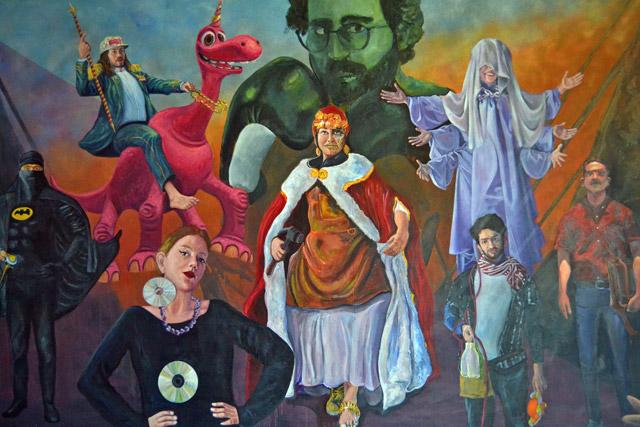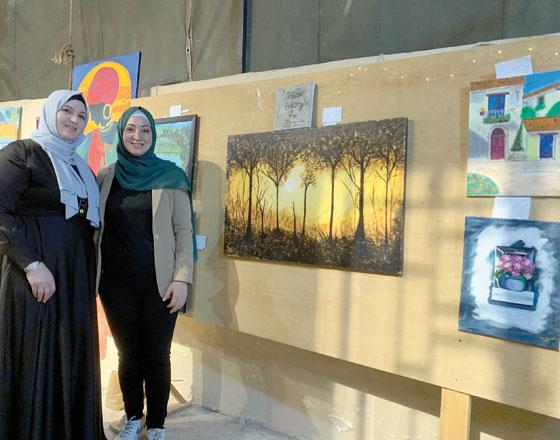You are here
Exhibition of local, international artists ‘explores concept of intersectionality’
By Ana Ibáñez Prieto - Aug 08,2017 - Last updated at Aug 08,2017

‘The concept of intersectionality’ is being explored through the work of local and international artists at an exhibition at Jordan National Gallery of Fine Arts in Amman (Photo courtesy of Khaldoun Hijazin)
AMMAN — “The concept of intersectionality” is being explored through the work of local and international artists at an exhibition at Jordan National Gallery of Fine Arts (JNGFA) in Amman.
Curated by Khaldoun Hijazin, Patte Loper, Diran Malatjalian and Ethan Murrow, the group exhibition, titled “Empathy and Craft in the 21st Century”, is organised under the patronage of Social Development Minister Hala Lattouf.
“Empathy and Craft in the 21st Century”, which will be running until September 3, marks the conclusion of a four-week series of workshops, each focused on 2D, 3D and 4D art practices as a vehicle to explore the idea that “we all inhabit multiple identities at once and are affected by related systems of social injustice and discrimination”, according to organisers.
Jordanian artist and curator of the exhibition Khaldoun Hijazin, stated that what makes this exhibition different from others is that “the way in which the art pieces were developed breaks the traditional format of the symposium”, whereby artists are given a topic to work on independently later.
“For this workshop, we made sure that we would be meeting every day in order to share the way in which we interpret things,” he continued, adding that “this collective brainstorming ensured that there would be something from the entire group in every piece”.
The exhibition revolves around the concept of intersectionality, which was coined by civil rights advocate Kimberly Crenshaw.
When asked about the meaning of the concept, Hijazin explained that “intersectionality means talking about who we are while looking beyond the simple labels we put on people”, pointing out that “everyone shares a common identity with others that we can use in order to overcome aspects of otherness and have more empathy for one another”.
“Intersectionality” is also the title of one of the central pieces of the exhibition developed by the collective.
Executed in the style and scale of hand-painted classic film posters, this work initiates a dialogue with the “buried tradition” of billboard painting, “paying tribute” to the artists who have lost their profession due to the advancements of print technology.
The image depicts a narrative constructed by a collective rethinking of “self” and “identity”, whereby each participating artist was invited to proclaim and investigate an “other self” using costumes, photomontage and painting.
The exhibition also showcases contemporary forms of expressions such as sound and video art installations
In a recent interview with The Jordan Times, Social Development Ministry Spokesperson Fawaz Ratrot voiced her appreciation for “all those who worked on the exhibition. We are thankful for their efforts and the work they did,” adding that the ministry considers art as “a mirror where social life is reflected”.
Related Articles
AMMAN — The Jordan National Gallery of Fine Arts is currently hosting the exhibition “Lines of Subjectivity”, featuring a selection of moder
AMMAN — For many Jordan-based artists, Gilgamesh Art Cafe’s “Arts and Book Exhibition” was their first art exhibition, lending an atmosphere
AMMAN — The Fire Station, a contemporary art space in the heart of Doha which supports artists and engages local communities throu












